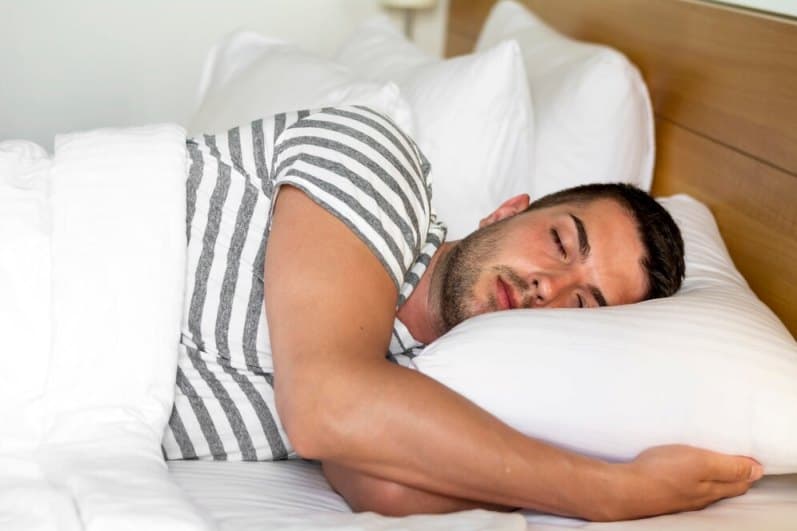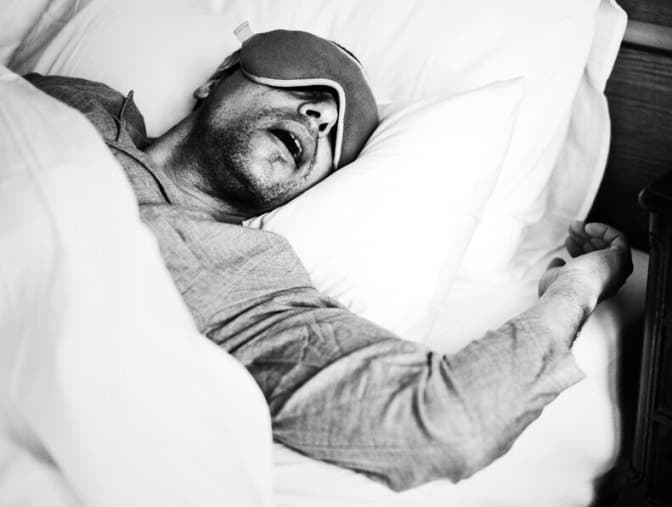Are you tired of tossing and turning on an uncomfortable bed, struggling to find a comfortable position to drift off into a restful slumber? The frustration of attempting to sleep on a less-than-ideal mattress or surface is something that many of us have experienced. But do not worry! Even in an uncomfortable bed, you can get better sleep with a few helpful tips and tricks.
Focus on relaxation techniques like deep breathing, adjusting your position, using pillows strategically, and creating a calming bedtime routine to help fall asleep on an uncomfortable bed.
The Role Of a Comfortable Bed in Getting Good Sleep
A comfortable bed plays a pivotal role in ensuring a restful night’s sleep. It provides the necessary support and cushioning to alleviate any discomfort or pain, allowing your body to fully relax. Here’s why a comfortable bed is essential to getting a good night’s sleep:
- Proper Spinal Alignment: A comfortable mattress and pillows maintain proper alignment of your spine, supporting the natural curvature of your neck and back. This alignment helps relieve pressure on your joints, minimizing any discomfort or pain that can disrupt your sleep.
- Pressure Relief: An uncomfortable bed can create pressure points on your body, leading to tossing and turning throughout the night. A comfortable mattress with adequate pressure relief helps distribute your body weight evenly, reducing the likelihood of painful pressure points and enabling you to settle into a deep sleep.
- Reduced Motion Transfer: If you share a bed with a partner, an uncomfortable bed may lead to disturbed sleep due to motion transfer. A high-quality mattress with motion isolation properties minimizes the impact of your partner’s movements, allowing you both to rest undisturbed.
- Temperature Regulation: A comfortable bed also plays a role in maintaining an ideal sleeping temperature. Many modern mattresses have features that promote breathability and heat dissipation, preventing overheating and excessive sweating that can disrupt sleep.
Signs That Your Bed is Uncomfortable
When it comes to getting a good night’s sleep, the comfort of your bed is of utmost importance. If you find yourself tossing and turning, unable to find a comfortable position, it may be a sign that your bed is not providing the support your body needs. Here are some signs that indicate your bed may be uncomfortable:
- Waking up with body aches and pains
- Frequent tossing and turning during the night
- Difficulty finding a comfortable sleeping position
- Feeling restless and unable to fully relax
If you’re experiencing any of the signs mentioned above, it’s important to identify the common problems associated with uncomfortable beds. Understanding these issues can help you find the right solutions to improve your sleep quality. Here are some of the common problems you might encounter:
| Problem | Possible Cause |
|---|---|
| Uneven or sagging mattress | Worn-out springs or lack of proper support |
| Hard or lumpy mattress | Insufficient padding or worn-out materials |
| Poor mattress ventilation | Heat and moisture buildup leading to discomfort |
| Old and worn-out pillows | Lack of proper neck and head support |
If you identify any of these problems with your bed, it’s time to take action to improve your sleep quality. Addressing the root causes of discomfort can make a significant difference in your ability to fall asleep and stay asleep on an uncomfortable bed.
Read Also: Why Does My Mattress Move When I Sleep?
Innovative Methods To Fall Asleep On An Uncomfortable Bed
Having trouble falling asleep on an uncomfortable bed? Don’t worry! We have some genius hacks that will help you drift off into dreamland, even on the most uncomfortable mattress.
Improving Bed Comfort With Pillows And Mattress Toppers
One of the easiest ways to make an uncomfortable bed more bearable is by using pillows and mattress toppers. Here are a few ways you can maximize their potential:
- Invest in a supportive pillow that matches your preferred sleep position. A pillow that properly aligns your neck and spine can significantly improve your comfort level.
- Consider using a body pillow to provide extra support and alleviate pressure points, especially if you tend to toss and turn throughout the night.
- Try placing a mattress topper on top of your uncomfortable mattress. Look for one that offers extra cushioning and support to create a more comfortable sleeping surface.
Creating A Relaxing Sleep Environment
Your sleep environment plays a crucial role in how well you sleep. Here are some tips to create a relaxing atmosphere:
- Keep your bedroom cool, dark, and quiet. Use blackout curtains or an eye mask to block out any unwanted light, earplugs or a white noise machine to drown out any disturbing sounds.
- Declutter your bedroom and keep it organized. A tidy space can contribute to a calmer state of mind and promote better sleep.
- Choose soothing colors for your bedroom decor. Soft blues, greens, or neutrals can help create a peaceful ambiance that promotes relaxation.
Practicing Better Sleep Hygiene
Establishing good sleep hygiene habits can significantly improve your sleep quality, even on an uncomfortable bed. Here are some key practices to incorporate into your bedtime routine:
- Stick to a consistent sleep schedule. Going to bed and waking up at the same time each day helps regulate your body’s internal clock.
- Avoid stimulating activities or screens before bed. Instead, opt for relaxing activities like reading a book or taking a warm bath.
- Create a relaxing bedtime routine. This could include gentle stretching, deep breathing exercises, or listening to calming music to wind down before sleep.
- Limit your intake of caffeine and avoid heavy meals close to bedtime, as they can interfere with your ability to fall asleep.
- Make your bed a sleep-only zone. Avoid working or watching TV in bed to train your brain to associate your bed with sleep.
Conclusion
With these practical tips, you can overcome the challenges of falling asleep on an uncomfortable bed. By adjusting your environment, implementing relaxation techniques, and considering alternatives like mattress toppers or pillows, you can improve your sleep quality.
Never forget to give proper sleep hygiene, such as establishing a consistent bedtime routine and creating a comfortable sleep environment.
With these strategies, you can optimize your chances of getting a restful night’s sleep, even on an uncomfortable bed. Sweet dreams!

